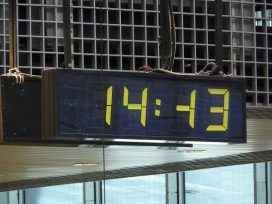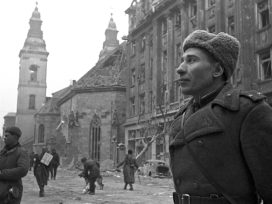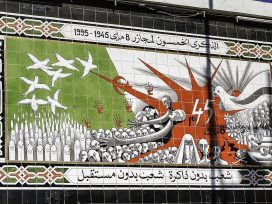Stalin’s continuing, disputed legacy
Surveying Russia’s geography of difficult pasts
The memory of Stalin’s Terror is now receiving more attention in Russia than at any time since the 1980s. However, the scope of the debate needs to be widened still further, argues Daria Khlevnyuk.
The Stalin epoch’s influence on Russia is undeniable. Present-day Russians mainly live in a country inherited from the Stalin-era Soviet Union, not least in terms of infrastructure, architecture and social institutions.1 However, scholars, intellectuals and journalists agree that Russian society has yet to thoroughly work through the totalitarian legacy of Stalin’s era.2
Lately, a lot of work has been done on this front. In 2017, a memorial to Stalin’s victims was erected, while last year’s Day of Remembrance of the Victims of Political Repressions saw a record number of media outlets publishing pieces on Stalin’s repressions.3 The investigation by a private citizen, Denis Karagodin, into his great-grandfather’s execution attracted a lot of attention from both the national and international media.4
Yet despite the clear and mounting evidence of Stalin’s repressions, Russians are clearly divided in their attitudes towards him. According to a recent Levada-Center poll, Stalin’s popularity is actually rising. Around 40 percent of respondents expressed positive attitudes towards Stalin, while around one third agreed that Russia now needs a leader like Stalin.5 The discrepancies in understanding the Stalin era and associated repression can be explained with reference to generational gaps, current politics and other such factors, but it is obvious that the memory of Russia’s painful Stalinist past is far from homogeneous.
Political repression and human rights: Segezha, Karelia region
Even train passengers on their way through the town of Segezha, in the Republic of Karelia in north-western Russia, cannot avoid the smell of rotten eggs that permeates the town – an effect of the sulphurous compounds produced by the local pulp and paper mill. This mill was built with Gulag labour as part of the Belomorsko-Baltiiskii Kombinat (BBK), a large industrial complex that stands alongside the White Sea-Baltic Canal, a grandiose venture also built by Gulag prisoners, without whom the costs to the state of such projects would have been prohibitive. Segezha developed around industry built by prisoners, which is served by a canal built by prisoners; the town itself was planned by imprisoned architects and built by inmates.
The region of Karelia is known not only for its paper-pulp facility but also for the prison colonies that still exist here. In fact, the current Russian prison system replicates the geography of the Soviet system,6 with some colonies and prisons inherited directly from Soviet times.7 One of Segezha’s colonies became famous thanks to its recent inmates. Mikhail Khodorkovsky, the prominent Russian oligarch, spent several years here. Two years ago, Ildar Dadin was dispatched to the same colony after being sentenced under Russia’s strict laws governing street protests. The echo of political repression does not stop here. Ildar Dadin’s time in the colony led to a minor crisis when he stated that he had been tortured.8
Dadin’s allegations were discussed in the press, with several former inmates of the colony coming forward to support his testimony9 and some of his fellow inmates staging a protest.10 The director of the colony stated that nothing of the kind went on in his institution and that Dadin had lied to draw attention to his case. However, one year on, the director retired and criminal charges were brought against him for abusing his authority and extorting money from prisoners.11 Torture and other human rights violations in Russian prisons are, unfortunately, common.
In the same year that Dadin brought to light the torture practiced in the Karelian colony, Yury A. Dmitriev, a Karelian memory activist, was arrested on charges of producing child pornography. Dmitriev’s case drew attention to his lifelong project – the commemoration of victims of Stalin’s Terror in Karelia. Twenty years ago, he discovered the site of mass execution in Sandarmokh to the south of Segezha and then worked on marking the burial sites of victims who died there while building the White Sea-Baltic Canal. Many saw Dmitriev’s arrest as an attempt to suppress the memory of Stalin’s acts of repression12 and a move aligned with the state’s efforts to hamper the activities of Memorial, an NGO working on the commemoration of Soviet’s totalitarian past and monitoring Russia’s current human rights record.
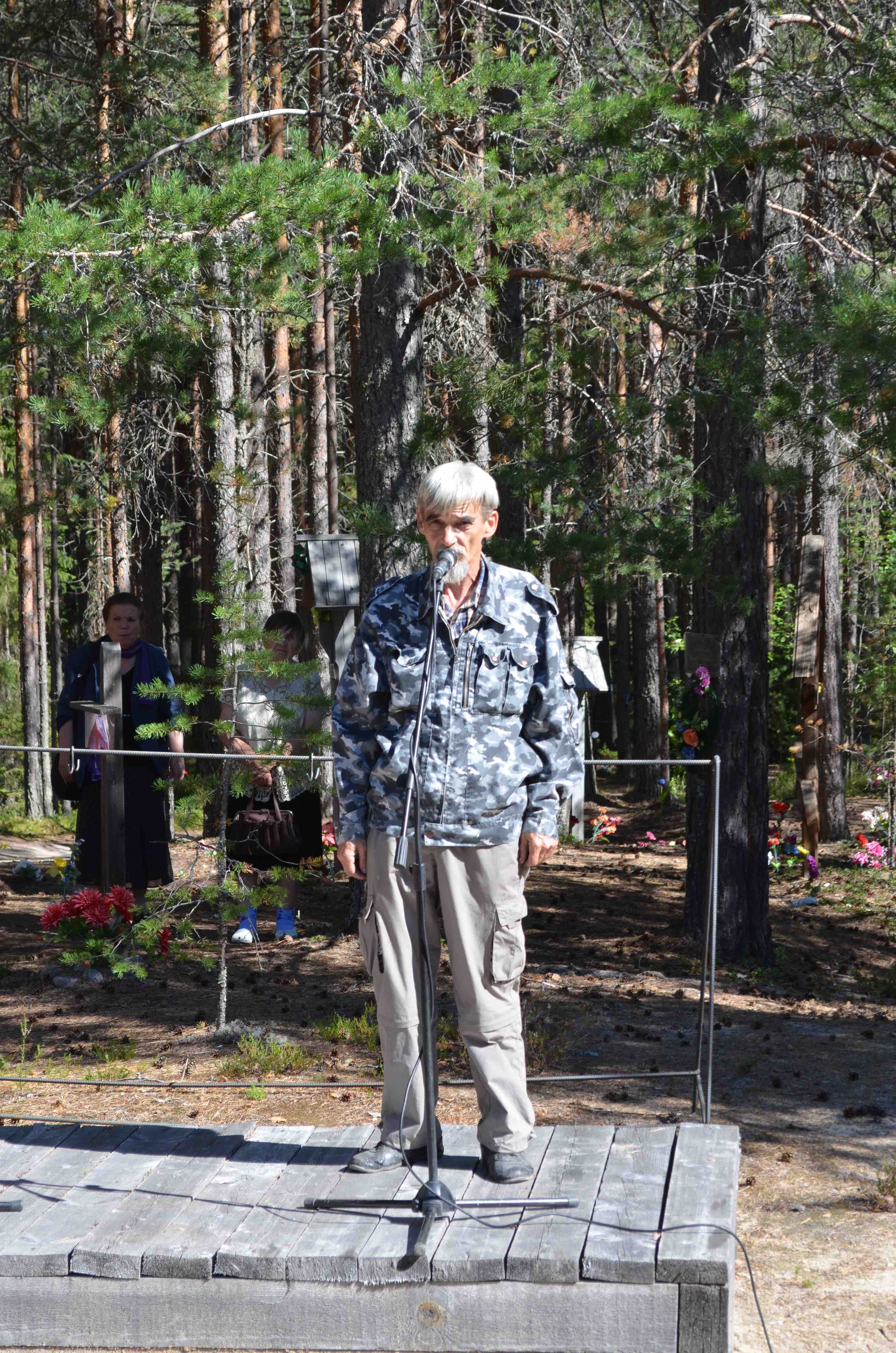
Yuri Dmitriev speaking at Sandarmokh, 5 August 2013. Photo: Visem. Source: Wikimedia Commonshttps://commons.wikimedia.org/wiki/File:Sandarmokh_059.JPG
The story of Segezha and the surrounding region is reminiscent of an oft-quoted line from George Santayana: ‘Those who cannot remember the past are condemned to repeat it’. Dealing with a difficult past means learning the lesson that human rights atrocities should ‘never again’ be repeated, that ‘we’ as a society – national and global – need to work to become a better place for everyone. The way in which German and then western European societies have coordinated themselves in taking responsibility for the atrocities committed during the Holocaust is often instructive in this respect. Russia does not have anything like this form of memory politics. Stories of political repression, torture in prisons and unlawful persecution often trigger references to Stalin’s Terror and the year 1937, the start of the most violent stage of the Terror, and discussions concerning the rule of law, or lack thereof, in today’s Russia. In Segezha, it seems that the past mirrors future; in other regions, however, Stalin’s past finds its way into the present.
Territorial conflicts and deportation: Ingushetia
Nine towers encircled by barbed wire stand on a federal road near Nazran, Ingushetia, a Northern Caucasian republic in the far south of Russia. The road is a showcase of the most important buildings in the region. Next to the towers there is a regional hospital, then a sports arena and, further along, a new school. Initially, the towers were the sole memorial in this area and they were dedicated to the victims of political repression. During the past decade, the memorial site has become more crowded. Monuments to military heroes now surround the towers – no one wants to reminisce solely about past tragedies, and Ingushetia also wishes to draw attention to the more glorious chapters of its history. The path to the towers runs through a colonnade in which the names of the Ingush heroes of the Russian Imperial Army adorn memorial plates; the colonnade also hosts statues of First World War heroes and a sculpture of an Ingush, the last defender of the Brest Fortress, one of the first places to bear the brunt of the Nazi invasion of the USSR during Operation Barbarossa in June 1941. There is also a memorial to the Ingush among the ‘liquidators’ who were the first responders to the Chernobyl disaster, and many other memorial plates to various heroes born in Ingushetia.
However, the nine towers still dominate the landscape, just as the memory of the deportations they commemorate still dominates Ingush identity. The prominence of this memory is proven by surveys,13 but even without these it is clear that the consequences of the deportations are still unresolved. Yet the fate of the Ingush is not unique. Each of the nine towers of the memorial represents a deported nation.
The Ingush people were one of the nations ‘resettled’ during the Second World War. They were falsely accused of treason and collusion with the Nazis. The real reasons for their resettlement are still not clear. There is no consensus among scholars, who cite insurgency, lack of integration into Soviet society and territorial considerations as possible causes.14 During the course of just one week, starting 23 February 1944, army forces completed the resettlement operation ‘Chechevitsa’, in which hundreds of thousands of Ingush and Chechens (who then shared the same republic) were taken from their homes. Any attempt to resist resulted in death. By March, the Chechen-Ingush Republic had been eliminated and the land was parcelled out to the neighbouring regions. Most of the Ingush territory went to North Ossetia, with Ossetians and Russians resettled in the newly vacant villages, and Ingush place names were changed to Ossetian and Russian ones.15 The Ingush were transported to Kazakhstan, thousands of kilometres away from their homes.
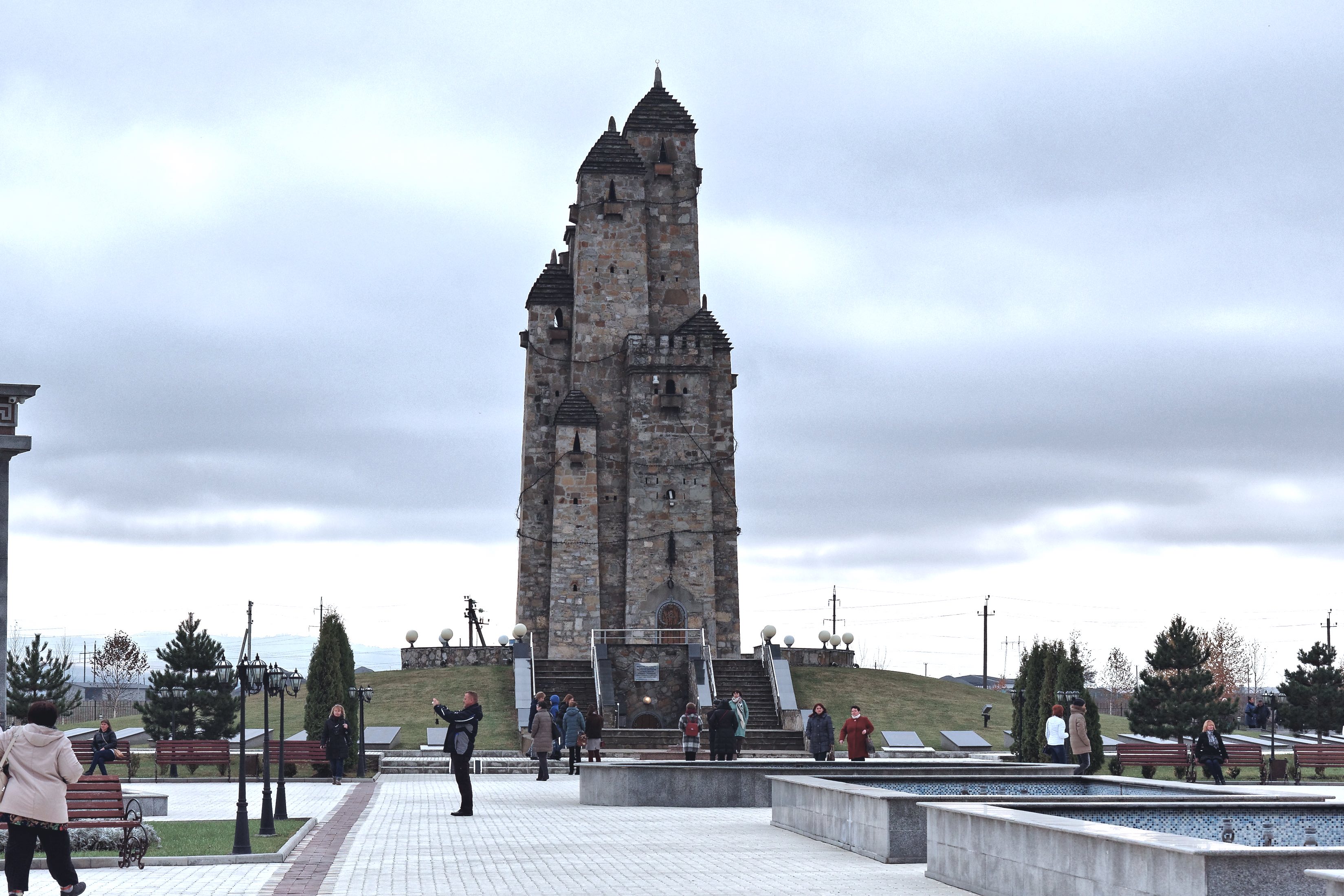
Nazran’s Nine Towers memorial. Photo: Wiki Commons
The horror and tragedy of the deportations are documented in a museum situated in the Nine Towers memorial complex. In a small room, historical documents and artworks show how people were torn from their land. They were transported in ice-cold railway wagons, with almost no food or water, and no privacy, pushing them to violate the established social norms of their communities. It is a story of death, starvation and fear – and one of nostalgia for the Ingush homeland. Freed to return after 13 years in exile, the Ingush did so in vast numbers, only to find their homes occupied. The reinstatement of the Chechen-Ingush Republic in 1957 did not mean that the Ingush regained their former lands. The Prigorodny District remained in Northern Ossetia. Local governments in the newly reborn republic were unprepared for the wave of returnees, and the new residents were not ready to leave the homes they had occupied for 13 years.16
The territorial conflicts began before the deportation, but it served to worsen them. In the 1990s, the situation became even more complicated, when Russian President Boris Yeltsin rehabilitated deported peoples. His decision to reinstate the Ingush Republic was greeted enthusiastically in the region, but its shortcomings were obvious. The law did not specify borders and the Prigorodny District remained contested territory. A visitor to the museum learns about the district in the exhibition hall, and about the so-called tragedy of 1992. In October that year, a violent clash between Ingush and Ossetians unravelled in Prigorodny District. Hundreds of people died and hundreds are still missing. The exhibition displays the names and pictures of Ingush victims along with the testimonies of eyewitnesses printed on the walls. The displays do not do justice to the full scale of these events and museum employees claim they used to have more extensive displays, but that some of the pictures were removed on the grounds that they are too disturbing.
Some Ingush and Soviet politicians have used the term ‘genocide’ to describe the events of October 1992.17 On the other side of the border between Ingushetia and Northern Ossetia, Ossetians consider the events of 1992 an armed insurgency by Ingush gangs.18 The two points of view on the tragedy remain impossible to reconcile. However, there seems to be one point of consensus. Both sides think that the federal government failed to resolve the ongoing territorial conflict. And this conflict is a direct consequence of the Ingush deportation of 1944 that displaced people from all over the Northern Caucus.19
Almost 16 years have passed since the tragedy, but the territorial dispute over Prigorodny District remains unresolved. Small clashes and conflicts still take place. A local politician criticized a wrestling coach in Northern Ossetia for including Ingush children in his team. Ingush activists criticize northern Ossetia’s government for discriminating against Ingush students in schools in Prigorodny District, claiming that schools in the area segregate Ingush and Ossetian pupils.20 Fights between Ingush and Ossetians, sometimes involving guns, occur from time to time.21 In a sense, Ingush and Ossetians coexist in the Prigorodny district in a state of covert conflict. For Ingush, this matter is a constant reminder – the rehabilitation was not done properly, and they still suffer from Soviet mistreatment.
The deportation of the Ingush has been disconnected from the Russian memory of the Terror. In fact, it is suppressed by the current regime’s fascination with victory in the Second World War. The day on which the deportations commenced, 23 February, is also the Defender of the Fatherland Day, not the main holiday dedicated to victory in the Second World War but nonetheless a day with clear military connotations. The official celebration on this day involves a mass gathering at the Nine Towers memorial where Ingush officials deliver speeches. During the most recent such gathering, speakers attempted to deal with both grief for the victims of deportation and the celebration of Ingush military heroes. While the first part is essential for the Ingush, the second demonstrates loyalty to the Russian national government. In other Russian regions, 23 February is not primarily remembered as a day of deportations; only the Ingush diaspora organized an event dedicated to the memory of deportations in the Moscow Gulag Museum. While the memory of deportations is still a story of the violation of universal rights and the unfinished history of repression, it remains a local story, almost invisible in other Russian regions.
Nostalgia for Soviet times: The Kolyma region
The infamous Kolyma road was built by prisoners in the Kolyma camps and is located in Russia’s far east. It is still the only road that connects Magadan, the region’s capital, and Yagodnoye, one of the biggest towns in the area. Travelling the road is risky as oncoming traffic leaves sand clouds in their wake that are so thick one can’t see the road. It takes around eight to nine hours to travel by car or minibus to Yagodnoye from Magadan, but there is no other way. Petrol is so expensive along the road that drivers prefer to buy it in Magadan and take it with them in cans. In Magadan itself, fuel is much pricier even than in Moscow. During the trip, unique far eastern landscapes combine with abandoned towns, villages and manufacturing plants. It is somewhat surprising that people still live in Yagodnoye as food is costly and fresh vegetables and fruit are almost impossible to come by. Food deliveries to the shops are rare and the goods expensive.
In Yagodnoye lives one of the most famous people of the Magadan region, Ivan Panikarov. He is an activist campaigning for the victims of Stalin’s repression to be remembered and the owner of one of the most impressive collections of Gulag artefacts and documents, most of which he stores in his apartment (which also houses his museum) and his garage. Panikarov has appeared in many interviews and documentaries about Kolyma’s Gulag sites. Whoever travels to Kolyma to study the Gulag system and visit these sites will most probably meet him at some point. Recently, journalists have been fascinated by a turn in Panikarov’s views. His latest interviews leave readers with an uneasy feeling. While Panikarov is still committed to the commemoration of Gulag victims, he seems to be struggling to find the right words to describe the repressions. On the one hand, he knows enough to be compassionate when speaking about the victims. On the other, he has suggested that he is not sure there was any other way to colonize Kolyma and colonizing Kolyma was essential for victory in the Second World War.
Guardian journalist Sean Walker claims that Putin’s nationalism has affected Panikarov.22 The longing to describe the Gulag as connected to victory in the Second World War is probably reinforced by the Second World War fever that has taken the country by storm during the past decade. However, this may only be part of the story. Panikarov moved to the Magadan region in the 1980s. He worked in construction when Kolyma was developing (whether this was an economically sustainable project is a different story). Workers there received ‘Northern Bonus’ payments and many moved to the region hoping to return back to warmer climes after several years of employment there. When the Soviet Union broke up, everything collapsed. ‘Real wages fell by more than 50 per cent in 1992 and by a further 25 per cent in 1993’, as geographer and Magadan specialist John Round points out.23 Unemployment rose, real wages dropped even further in 1999. The situation might have improved somewhat since then, but in general conditions in the Magadan region remain extremely arduous.
In many ways, for someone like Panikarov, it may seem that the Soviet project was right for Kolyma. The region developed and people prospered. Of course, no one knows more about the price paid for this prosperity than Panikarov. Yet he is uncertain of how to interpret what happened in the region in Stalin’s times and how this relates to what is happening there now. In a sense, Panikarov’s uncertainty about the Soviet period can be seen not only as a result of Putin’s nationalist politics but also of Putin’s economics.
In the same vein, some people’s fascination with Stalin may simply be a longing for a better life, for a mythical golden age. General discontent with the current state of affairs may push people to look for better times in the past, and Kolyma’s glorious past was built in and around the Gulag.
How a difficult present shapes difficult pasts
Discussions of the aftermath of political repression and the memory of Stalin’s Terror in particular are often limited to debates about human rights. Stories of Stalin’s acts of repression eerily coincide with stories of current political persecution and human rights violations. Hence the pressing need to acknowledge the various legacies of Stalin’s acts of repression. But as a community of remembrance, Russians are very disunited when it comes to both frames of reference and calendars. Due to having the Day of Remembrance of the Victims of Political Repressions, most Russians overlook the fact that 23 February and 8 March are also days marking deportation for Ingush and Balkars, respectively. Some of the regions where these particular episodes of repression took place are so far away from the country’s centre, both in terms of distance and imagination, that the way in which repression shaped these regions lies largely outside the scope of national debate.
Nevertheless, to understand the aftermath of repression means decentralizing memory and acknowledging various acts of repression throughout the former Soviet Union – and how these acts affected different regions of Russia and their development. Since there is no national memory politics concerning Stalin’s repression, it is only natural that this chapter in Russian history should be understood differently throughout the country. Soviet nostalgia might be nostalgia for a better way of life – even more so in those regions where the contrast between Soviet times and today’s Russia is more striking than in others. All in all, the present probably shapes the understanding of the past more so than history shapes the understanding of the present.
Maxim Trudolyubov, ‘The Stalinist order, the Putinist order’, Eurozine, 25 June 2013, https://www.eurozine.com/the-stalinist-order-the-putinist-order/. See also the series of articles in Vedomosti by Maxim Trudolyubov and Pavel Aptekar on ‘Stalin’s project’, https://www.vedomosti.ru/opinion/articles/2009/04/24/stalinskij-proekt-masterstvo-redaktora.
Aleksandr Etkind, Warped Mourning: Stories of the Undead in the Land of the Unburied, Stanford University Press, 2013; Dina Khapaeva, ‘Historical memory post-Soviet gothic society’, Social Research: An International Quarterly 76, no. 1 (2009): 359–94; Catherine Merridale, ‘Haunted by Stalin’s ghost’, History Today 59, no. 9 (September 2009): 32–38.
A list of publications can be found on the Memorial website, https://www.memo.ru/ru-ru/projects/memomedia.
A website (in Russian) dedicated to Denis Karagodin’s investigation can be found at: https://blog.stepanivanovichkaragodin.org/. See also: https://www.rferl.org/a/stalin-great-terror-search-for-great-grandfather-executioners-reconciliation-russia/28131158.html.
Karina Pipiya, ‘Stalin in public opinion’, Levada-Center, 2018, https://www.levada.ru/2018/04/10/17896/.
Judith Pallot, ‘The topography of incarceration: The spatial continuity of penalty and the legacy of the Gulag in twentieth and twenty-first-century Russia’, Laboratorium 1 (2015).
Ksenia Averkieva, ‘The territorial organization of correctional institutions in Russia’, Regional Research of Russia 4, no. 3 (2014): 152–164.
Sarah Rainsford, ‘Russia activist accuses jail of torture,’ BBC News, 1 November 2016, https://www.bbc.co.uk/news/world-europe-37836739.
Tom Balmforth, ‘Ex-inmates, relatives echo Russian prison torture claims of jailed activist’, RadioFreeEurope/RadioLiberty, 28 November 2016, https://www.rferl.org/a/russia-dadin-prison-torture-allegations/28144589.html.
‘Human rights commission reports on torture at Karelian Penal Colony’, Meduza, 2 December 2016, https://meduza.io/en/news/2016/12/02/human-rights-commission-reports-on-torture-at-karelian-penal-colony.
Gleb Yarovoy, ‘Torture and extortion’, 8 June 2018, http://7x7-journal.ru/item/108033.
Natalia Shkurenok, ‘The historian who dug too deep’, openDemocracy, 4 September 2017, https://www.opendemocracy.net/od-russia/natalia-shkurenok/yuri-dmitriev-sandarmoh.
Tatyana Stefanenko, Tanzila Tumgoeva and Marina Kotova, ‘Kul’turnaya Pamyat’ i Sotsial’naya Identichnost’ Ingushey Kak Predstaviteley Repressirovannogo Naroda’ [Cultural Memory and Social Identity of the Ingush as Representatives of the Repressed People], National Psychological Journal 28, no. 4 (2017).
Vladimir Kozlov et al., Vaynakhi i Imperskaya Vlast’: Problema Chechni i Ingushetii vo Vnutrenney Politike Rossii i SSSR (Nachalo XIX—Seredina XX) [Vainakhi and Imperial Power: The Problem of Chechnya and Ingushetia in the Domestic Politics of Russia and the USSR (Beginning of the Mid-Twentieth Century], ROSSPEN, 2010.
Pavel Polyan, Ne Po Svoyey Vole: Istoriya i Geografiya Prinuditel’nykh Migratsiy v SSSR [Not by choice: History and geography of forced migrations in the USSR], OGI, 2001.
Mairbek Vachagaev, ‘Reabilitatsiya Narodov Severnogo Kavkaza: Osnovnyye Problemy Chechentsev i Ingushey v Period s 1957-Go Do Nachala 1990-kh Godov [Rehabilitation of the peoples of the North Caucasus: The main problems of the Chechens and Ingush in the period from 1957 to the early 1990s]’, Caucasus and Globalization 3, no. 1 (2009).
Makka Albogachieva, ‘Osetino-Ingushskiy Konflikt: Prichiny i Posledstviya Tragedii Oseni 1992 Goda’ [Ossetian-Ingush conflict: Causes and consequences of the 1992 fall tragedy], Caucasus and Globalization 6, no. 4 (2012).
Valery Dzidzoev and Ruslan Nikaev, Sovremennyye Etnopoliticheskiye Protsessy Na Severnom Kavkaze Kak Vyzovy i Ugrozy Natsional’noy Bezopasnosti Rossiyskoy Federatsii [Modern Ethnopolitical Processes in the North Caucasus as Challenges and Threats to the National Security of the Russian Federation], Vladikavkaz SOGU, 2013); Ruslan Nikaev, ‘Vzglyad Na Tragediyu Oseni 1992 Goda: Dvadsat’ Let Spustya (K Istorii Poyavleniya Mifa o "Genotside Ingushskogo Naroda" Kak Splanirovannogo Akta "Etnicheskoy Chistki") [View on the Tragedy of the Autumn of 1992: Twenty years later (The history of the emergence of the myth of the ‘Genocide of The Ingush People’ as a planned act of ‘ethnic cleansing’)], Bulletin of the North Ossetian State University Named after Kostan Levanovich Khetagurov, no. 2 (2013): 39–47.
Nikolay Bugai and Askarbi Gonov, Severnyy Kavkaz: Novyye Oriyentiry Natsional’noy Politiki [North Caucasus: New National Policy Guidelines], New Chornograph, 2004; Andrei Zdravomyslov, Osetino-Ingushskiy Konflikt: Perspektivy Vykhoda Iz Tupikovoy Situatsii [Ossetian-Ingush Conflict: Prospects for Getting Out of the Impasse], ROSSPEN, 1998.
Emma Marzoeva, ‘Deputaty Posporili Ob Uchastii Ingushey v Obshchestvenno-Politicheskoy Zhizni Severnoy Osetii’ [Deputies have argued about Ingush participation in the social and political life of North Ossetia], Kavkaz Uzel, 2 December 2017, http://www.kavkaz-uzel.eu/articles/313260/.
‘V poselke Kartsa voznik konflikt mezhdu osetinami i ingushami’ [A conflict arose between the Ossetians and Ingush in the village of Kartsa], Sputnik Ossetia, 2 September 2017, https://sputnik-ossetia.ru/North_Ossetia/20170902/4794944.html.
Shaun Walker, ‘Russia’s Gulag camps cast in forgiving light of Putin nationalism’, The Guardian, 29 October 2015, https://www.theguardian.com/world/2015/oct/29/russia-gulag-camps-putin-nationalism-soviet-history.
John Round, ‘Marginalized for a lifetime: The everyday experiences of Gulag survivors in post-Soviet Magadan,’ Geografiska Annaler: Series B, Human Geography 88, no. 1 (2006): 4.
Published 17 August 2018
Original in English
First published by Eurozine
© Daria Khlevnyuk / Eurozine
PDF/PRINTIn collaboration with
In focal points
Newsletter
Subscribe to know what’s worth thinking about.
Related Articles
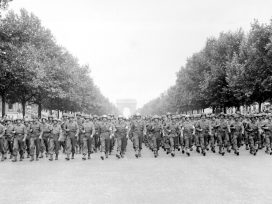
The Second World War no longer serves as a history of the western European present. The current era is marked by a different set of problems, not least the fading appeal of the model of democracy installed after 1945.
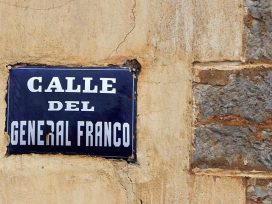
Controversies over the legacies of dictatorship and civil war have polarized the Spanish debate for over two decades. Now, on the fiftieth anniversary of Franco’s death, the legitimacy of the transition is uncertain. Could things have been done differently?

